What rod and jigs to buy first?
Will be fishing with a sea-anchor. If the group wants to fish light jigging we go to 50m-80m. and a bit heavier we go 90m-120m. I originally planned on using Slow Jerker 603-3 for the 50-80m then 603-6 for the 90-120m.
Maybe we focus on 90-120m? Or should I buy a dozen jigs for each range?
Here’s a detailed information on how to match jigs to the rods.
Please read this article first if you haven’t. Today I will talk about what exactly I recommend when you are just starting SPJ.
First and foremost, let me review the most important concept in SPJ, Action Tone.
Action Tone
One of the keys to the success is to know what action tone you have at the moment. And to choose the type of jig that works best in that action tone.
Action Tone is how strong the rod works (in term of bending and whipping) in relation with the jig weigh and the water resistance. The rod spec says the appropriate jig weight range. But the jig weight is not the only factor that the rod makes the action in. The water influence is a big factor. And you will learn it’s so critical to know “How heavy is the water right now?”
To determine Action Tone, you select your rod power on one end, and you have on the other end, the line, jig weight, depth, currents, and how you are drifting. Action Tone can be light, medium, and heavy. It’s not based on numbers. It’s a feeling. It’s OK that your feeling is different than other people. But you have to be consistent within your judgement.
Then according to the action tone you have, you choose the jig type and actions accordingly. Your assessment of Action Tone is very critical.
How heavy is the water?
The depth is just one factor. Water feels light when it’s shallow. Water feels heavy when deep.
The line catches water and makes resistance and line slack. With a light line, the water feels light. With a heavy line, it feels heavy. The coating of the line makes a difference too.
Currents makes a different. But think about it. If there’s only one water mass moving around you, your boat is drifting with the current, and your jig is moving with the current, it does not matter how fast the current is, right? But in reality when the current is moving fast, at least over 80m depth, there are a few layers of currents. Sometimes the top layer is moving fast, sometimes the bottom, and sometimes both in different directions. Multi-layered currents make the water heavy.
How your boat is drifting… This is a huge impact. When you are fishing on the controlled drift to stay vertical, this has nothing to do with how heavy the water is. But if you are free-drifting or drifting with sea-anchor, you are being pushed away from the jig by the wind and the water will feel heavy.
You just need to drop to the bottom to see what action tone you are getting on your rod at that time. And it’s important to always pay attention to the water resistance which is constantly changing every hour and every place. This awareness makes a huge difference.
Once you know how heavy the water is, you can think of a tactic to play. There are a kind of jigs that are good in STRONG action tone for energetic actions. There are a kind jigs that are good in SOFT action tone for slow fall actions.
If you have 2 different power rods, you can play different tactics and also adapt to different water conditions.
What rod to buy?
When you are just starting to Slow Pitch Jigging, I recommend to explore 50m – 80m of water. Not shallower, not deeper. No matter what depth you have been fishing, I recommend this depth. But If you have a captain controlling the drift for you to stay vertical, explore 80m – 110m. You should set up for this depth anyway, and when the condition is friendly to allow you to go deeper, you can do so with the same setups.
With that being said,
I recommend to buy a Power 4 rod (Slow Jerker 603-4 equivalent).
It would be great if you can get 2 rods for more tactic choices and more adaptability. And I recommend to have the same brand. You need consistency to evaluate the action tone. And when you have consistency, you will notice small changes.
Many people want to buy a cheap Class C rod to start with. I understand that. Especially if you are free-drifting, you never know if SPJ works and you want to take a safe, cautious, purchase plan. But for the above reasons, when you decide to go seriously into SPJ, I always recommend to get good quality SPJ rods of the same brand and not use Class C rods. So, if you are fishing on the controlled drift, or at least drifting with a sea-anchor, and you can stay somewhat vertical, I recommend to save a little more and start with a good quality Power 4 rod. Then if you like it, get a different power rod of the same model. That’s what I recommend. Many people constantly look for “the best rod” and get different kinds. But I don’t really like having different kinds of rods because I lose consistency.
There’s no Best Rod. There’s only Best of You.
What jigs to buy?
There are so many jig types, jig weights, and colors. Usually I see many people carry a bunch of different kinds, without knowing what the characteristics they have. Lots of kinds and brands, but little variety of jig weights.
I recommend the opposite.
Get only a few jig types of many different weights.
That is the best way to learn. First you need to learn the rod reel actions of SPJ. Watch my video. Tape and watch yours. Learn the actions. While you do that, practice with different weights. Jig weight changes the action tone. it changes the rhythm of your actions. You notice all the little differences. You start learning to listening to the line while in action. The same jig of the same weight may feel totally different in the next trip. It doesn’t matter if you catch fish. Make 10 trips like this. This is the best way to build up your sensitivity.
Light action
- Spunky
- Legend
Weights
150g – 230g
Versatile
- Arc
- Rector
- Abyss
Weights
150g – 300g
Soft action
- Gawky
- Cranky
Weights
220g – 300g
Just choose one from each category. And get the jig weights that are indicated for each category.
If you are free-drifting, you don’t have to get soft action jig. My recommend is Arc and Spunky. And Abyss if you want one more. Rector is not recommended for free-drifting because it’s too slow to fall and you lose control easily.
If you are controlling drift or slowing drift with a sea-anchor, you can get one from each category, or maybe get 3 Versatile. Because light action jigs and soft action jigs work in specific actions. If you are in the learning stage, playing all kinds of actions with a versatile jig may be better for you.
Anyway, try to stay with 2 or 3 jigs only. There are so many things you can change in settings as well as in actions. It’s very important that you are aware of what you are keeping consistent and how you are changing.
Then gradually as you go deep into SPJ, you can get more variety of jigs and maybe you can get the second rod.
Just like the rod. There’s no “Best Jig”. You should get to know each jig just like you should get to know your teammate.
How to expand your game
After you learn how to make slow pitch actions, build up your sensitivity (your sense of Action Tone), and get to know a few jigs, then you will go more into tactics. Maybe you want to add some new jigs to your team, and maybe the second rod too.
For the second rod, Power 5 or 6. If you are free-drifting, maybe Power 6 (Slow Jerker 603-6 equivalent). If you are controlling drift, Power 5 (Slow Jerker 603-5 equivalent). If you focus more on deeper field, Power 6. If you want to focus on 40m-60m water, Power 3. Something like that.
I don’t even talk about Power 1, Power 1.5, and Power 2. In what situation do we use them? In shallow waters 40m – 60m, with small jigs under 100g, on the controlled drift by the spankered boat. Or sometimes at 100 meter deep, with jigs around 180g, in a very soft action tone like long fall technique, also on the controlled drift by the spankered boat. Either way, you can’t use them in the fast current condition despite that you stay vertical. You need to note that any jigging reference from Japan is based on the controlled drift by the spankered boat, which is the most efficient way to stay vertical. So, we don’t have to consider these models if you are fishing outside Japan.
As for jigs, again, let me emphasize that it’s so important to spend time with each jig of different weights and in different conditions.
Ask yourself if you can tell what jig you are playing right now.
That requires a lot of attention in details, right? How lightly does it lift? How long does it hang? How fast does it fall? Actually it doesn’t matter if you can tell, but it does matter, and it makes a difference, if you pay that much attention.
Then you start making your choices, rather than randomly throwing everything you have at the ocean.
First you have a purpose. For example, you want to try energetic swimming actions. You are aware of the condition that’s given right now. You know how heavy the water is. Then according to your purpose, you choose a jig type. For example, Spunky. According to the condition, you choose the weight. And then you think, “Do I have a rod to make strong action tone in this condition?” Your Power 4 rod would not make strong action tone in this condition… You don’t have any other rod. Shit. Now you know what I mean when I recommend to have 2 rods for more tactics and adaptability. OK, but if you learn enough from this website, you may have brought a second reel with PE1.5 line load. You switch reels from PE2.0 to PE1.5. Maybe not enough, but the water will feel lighter and you will be more in strong action tone…
You do it and hit!!!
Can you imagine that? Can you imagine that it will be far more fun than just catching fish without knowing why. The fish size doesn’t matter, right?
As you experience, more and more information, ideas, and just hunches will come into your mind before you make a choice. And you will have more knowledge and tools to make it happen.
How you start learning the game is so important. Sometimes experienced anglers have tougher time learning. Because all the experience, knowledge and habits get in the way. You wish good luck to all of you.
Check out the characteristics of Seafloor Control jigs.
>> Seafloor Control Jig Tactical Info
Hope the information helps you! Good luck!
[margin30]
Related Posts
34 Comments
Leave a Reply to Shukor Ali Cancel reply
Categories
- 1. SPJ (57)
- 1-1. Principles (9)
- 1-2. Techniques (11)
- 1-3. Setup (17)
- 1-4. FAQ (19)
- 1-5. Tackles (3)
- 1-6. Video Gallery (2)
- 2. Other Offshore Games (5)
- 3. Fishing Report (105)
- 3-1. Totos (25)
- 3-2. Readers (72)
- 4. Fish Cooking (19)
- 4-1. Iki-Jime (3)
- 4-2. The Art of Sashimi (5)
- 4-3. Recipe (7)
- 4-4. Seasoning (3)
- 5. Fishing Charter (6)
- Fish (12)

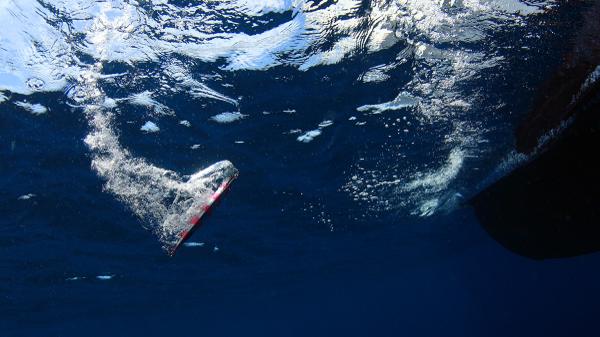
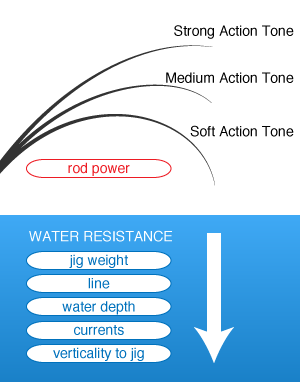

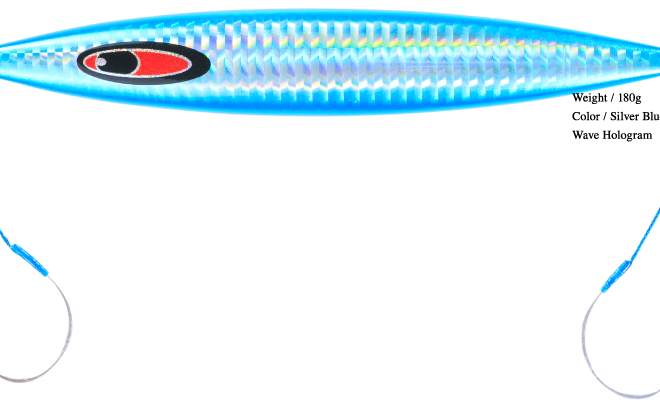
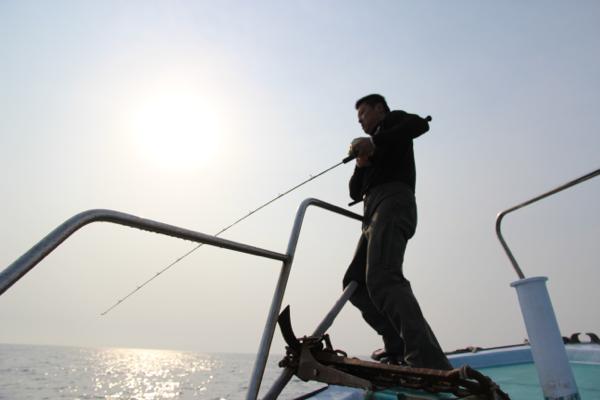
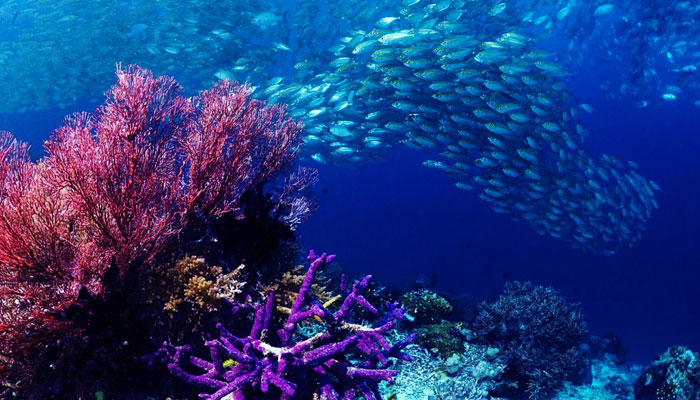
[…] tidak rod untuk slow jigging dipakai utk jig berat, bisa buat panduan milih tipe rod slow jig : FAQ: How should I match the rod to the jig? | Japanese Anglers Secrets Reply With Quote Share with […]
Firstly, thanks for a very informative and detailed website! As a slow pitch jigging wannabee this site has been extremely helpful.
I have a question regarding choice of rod. I live in Denmark and spend considerable time with conventional light jigging for north Atlantic cod, both from boat and kayak. Jig weights (conventional jigs or robbers) for lighter tackle are typical in the range of 50-150g. When current becomes an issue we use conventional jigs with weights from 250g and up – not light tackle. Water depths are typical 15-20 meters and fish up to 6-8 kg are not uncommon with the occasional +10 kg specimen.
In addition to the Danish saltwater fishing, I fish in tropical water once or twice every year, mostly Eastern Africa with focus on GT, doggies and smaller reef species. On these trips there is commonly a 50:50 mix of speedjigging and popping/stickbaits and water depth is typical 30-40 meters with some trips to deeper water after AJ. It would be very interesting to try slow pitch jigging on these trips as an alternative to heavy speedjigging.
I have considered to opt for PE2-3 and purchase a Poseidon Slow Jerker 603-2 or 603-3. Which one will be most appropriate for a mix of Danish and African waters? My own guess is that 603-2 will be most appropriate for Denmark, whereas 603-3 will be fine for tropical waters. Though, for now I will only purchase one rod, so I would be very grateful for some advice – despite the obvious conflict when comparing the two salt water scenarios.
Best wishes,
Dan
The rod model selection depends mainly on the following factors.
A. What is your main depth range?
B. How is your boat operating while fishing? Free-drifting? Drifting with sea-anchor? Or controlled drift by the captain?
C. What are your main targets? Pelagic fish? Demersal fish? Or both?
I don’t have your info on B. But you are probably free-drifting.
You are fishing less than 40m of water anyway. With slow pitch jigs which fall slower, you should use 20% to 50% heavier weight than conventional jigs. You would be probably using 100g to 180g mostly. I would choose 603-3.
Use the lightest possible line you can. Maybe PE1.5.
I m leaving in saudi arabis at the red sea
I like to use slow jigg i have 634 sf rod what kind of jig if i wont to go less than 50 m and what jigg for 75 ,100,150 m
Did i need to anchor the boat or i can do the jigging with drafting
Hi Talhat.
SF rod 634? Is it Palms? It’s gotta be #4 rod huh.
Staying vertical is the key to the success of slow pitch jigging. There’s no way to do slow pitch on an anchored boat. Your jig will be moving with the ocean. You need to drift. Buy by what? Free-drifting is the wind mostly, not by the current.
Check out the following articles.
http://anglers-secrets.com/v2020/light-line-for-the-vertical-game/
http://anglers-secrets.com/v2020/faq-why-does-it-have-to-be-so-vertical-for-slow-pitch-jigging/
And I recommend you to stay in shallower end of your field if you are free-drifting.
Send me an email, and I will suggest what jigs will be suitable for your fields and your rod.
Talk to you later.
Dear mister Totos i am planning to get a ps sl 603-3 and i will use it with a shimano torium reel with line retrieve 117 cm 6.2 ratio.
I think i understand mostly what you are saying and your explanatiions are very good but since most of my budget will be going on the rod i would apreciate if you could suggest what sfc jigs i mostly need for fishing from 50 to 100 m of depth. Thank you in advance.
Hi Chris.
You can send me an email from Contact Form and we can discuss the details.
For general information…
If you are free-drifting or drifting with a sea-anchor, given boat-friendly ocean conditions, you would probably need 130g to 180g jigs in the shallow half of your field, 150g to 230g or heavier in the deep half to stay somewhat vertical. And 603-3 will be medium action tone in the shallow, soft action tone in the deep.
Therefore, I recommend following jigs.
Arc 140g
Spunky 150g
Cranky 170g
Arc 170g
Rector 180g
Abyss 200g
Gawky 220g
Abyss 230g
Dear Totos,
110-160m depth
Free drifting boat
Reel: Ocea Jigger 2001NR-HG
Rod: Poseidon Slow Jerker 603-6
Line: PE2
Leader: 40lb flouro
For strong action – 210gr Spunky, Rector
For medium action – 240gr Rector
For soft action – 300gr Gawky
Are my jigs selection OK?
Cheers,
Benjie
Hi Benjie.
That sounds about right. But free-drifting in such a depth is so hard to be vertical unless you have super friendly conditions.
Rector is such a versatile jig if you are vertical, but not for non-vertical situation. You would like Arc 260g, 290g, Abyss 260g, Arrow 260g better.
Thanks Totos! Will check those out and give it a try.
Cheers,
Benjie
Totos i can’t find anywhere the tactical info for arrow. Can you enlighten us please?
Thank you.
Here’s my FB post on Arrow.
It’s a great semi-long jig that works in non-vertical, spinning game.
https://www.facebook.com/JapaneseAnglersSecrets/posts/972112126209972
Thank you very much !
Hi Totos,
Newbie here. I have gone through your website and found it very informative. Nice work.
I’m sorry I have more than a question to ask but also for more clarifications and suggestions based on what my set up is at the moment,
I currently have the below set up,
Rod: Poineer – Blue Lagoon, Jigging rod. (light weight)
15-30lb / 6.8-13.6kg / PE: 1.5-3 CW: 80-170gr / 3-6oz
Reel: Penn, SSV7500
MONO YD/LB: 440/15 300/20 210/30……BRAID YD/LB: 430/40 360/50 320/65
Bearing count: 6, Max drag: 35lb | 15.8kg, Gear Ratio: 4.7:1, Weight: 28.70
For above, I have reeled 60lb braid and using a shock leader of 80lb, using jigs between 100g to 150g. All I do is jig according to youtube videos, but I want your suggestions to what I can do more accurately. I live in Maldives where all islands are surrounded by salt and with different depths reachable easily. I want to know which type of jigging work best on this set up and how and which depth should I be trying.
I have another set up ordered on the way – Shimano Saragosa 6500 and rod Shimano Caranx Yasei LP, 7 feet – type, light pleasure. This is so interesting that I keep buying stuff but I know a whole multiple set up won’t help before acquiring knowledge on how to use them properly.
Look forward to your criticism and advise. 🙂
Cheers,
Iyartz
Hi Lyarts.
I know the concept of slow pitch jigging is really mind-blowing for conventional jiggers. Once you use the tackle in the field, everything starts making sense. But it’s hard to swallow before you get the tackles.
I’ll be honest with you. Forget the spinning tackle. Get a overhead reel with high gear. Use lighter line, maybe PE2.0 or 30lb. Use heavier jig weight, maybe 1.5 or 2 times heavier than what you normally use.
Hi, thanks so much. I have been reading and watching some videos as well and as you said, I will have to go for an overhead reel. Can I ask you if Shimano Trevala S series Rod will be a good option? I have yet to decide which one to go out of the 5 models, or perhaps, please suggest me one. For reel I will use a Saragosa SW6000 for now and will get a good overhead reel once I can give my wallet some time before I spend again.
Many thanks,
Iyartz
Hi Lyaz.
Well, unfortunately this Shimano rod is not a slow pitch rod. It’s the hard-working fast jigging rod. I would not say you can’t do slow pitch with this rod if you are vertical. If you are not vertical, this rod will actually work better with high-speed jigging.
But I would not recommend this rod if you are looking for a rod to start slow pitch jigging.
Hi Toto san,
You blog is so full of information that i cant atop reading it. The more i read the more deeper i want to know and gain knowledge.
I have been in fast action jigging all this while and now venturing into Slow Pitch jigging as its the inn thing now
After reading your blog i have finally bought Shimano Ocea Jigger 1501HG.
The places where i went for jigging usually ranges from 30m to 80m.
With the above info i need your advise what the best rod to go with the overhead reel which i have already bought.
I intend to get either 1 of the 3 brands you Claasified under Class A.
1) Poseidon by Evergreen
2) Propogate by Beat
3) Ocea Jigger by Shimano.
What i am not sure is what model of each of the brand you classified under class A.
Need your helpful advise.
Hope to hear from you soon
Regards
Shukor Ali
Hi Toto san,
What i mean is which model to buy if i choose to buy any one of those 3 brands to go with my OJ1501HG.
Thanks
Shukor Ali
Hi Shukor.
Thank you so much for supporting Japanese Angler’s Secrets.
The rod model selection greatly depends on how vertical you are with the jig.
How is your boat operating while fishing? Free-drifting? Drifting with sea-anchor? Or controlled drift by the captain?
If you are free-drifting, you should use heavier jigs and the rod model needs to be heavier. But I would say power 4 rod would be good for your depth range. Like Slow Jerker 603-4.
And sure, OJ1500HG would be good. You may wish you had the power and the speed of OJ2000HG sometimes in tough conditions with heavy jigs, but now that you have a 1500HG, you should try your best with it.
What if I use 60g Jig with 603-4 rod , I think I cannot feel the jig right or it is normally I can use it ?
It also depends on the depth and the line. You can go to the fishing port and try. If you drop the jig in the water while most of your line in the air, you can feel the jig. The more water influence is on the line, the less you feel the jig.
Anyway, slow pitch jigging does need certain jig weight to get the action going.
Greetings from Turkey. Great informations about slow jigging. Appreciated for your help by preparing this website.
I have decided to start slow jigging in Aegean saltwater.
I think its better sea anchor drifting regarding your comments. So i will buy one.
The depht will be between 40-90 meters.
I need a rod and reel reccommendation. And i will be happy if you give a jig weight advise.
Thanks and best regards.
Cenk D.
hi Cenk.
I’ll be answering you on another comment you made.
Hello totos ,
I saw on your posts and comments that i can use heavier jigs than what’s written in the rod ? Can you please give more explanation about this and how can my rod hold this weight and dont break ?
Thank you 🙂
Hi Ziad.
If your rod breaks on actioning your jig, it won’t hold the fish you will catch with it, right? We are not casting the jig either. Casting causes sudden impact so you have to follow the rod spec.
No, you will never break your rod by dancing your jig. And like explained in this article, jig weight is not the only weight that your rod works against when you make actions. You have all the water resistance factors. And there’s a point where you will feel your rod is too soft to work against the weight you are getting. It means your jig is just hanging in mid water and not making any actions. This is the limit of your rod. But this can not be described in the spec.
And i have another question that i see people using very heaving jigs like 600 to 800 grams jigs with different shapes some are long and some are normal , how can i do that when i see that the rods can maximum hold 300gm jigs 🙂
That is possible. Please read my answer on your different comment. Jig weight is not the only factor. If you are vertical and the condition is friendly, you can work with any weight.
But in reality, for doing slow pitch jigging with slow pitch rod, 400g will be the heaviest jig weight you can work with. If you use heavier jig weight, you will need a highpitch rod, or do more of high speed jigging.
Hi Totos, I have been a fan of slow jigging for the last four years. Not any problem until the last two trips that I’ve lost approximately 20 jigs combined. I kept thinking but seem not to figure it out so let me ask the expert, here it is :
Sometimes on the drop, I lost the jig. Sometimes on the first hard pull, sometimes while jigging up and most of the time in the middle of the fight. I’ve tried using tooth proof wire leader but the line always broke above it or far above it. After line breakage, I always checked the line and there is some fraying spots on the line, but it is hard to look for it while I’m fishing and the line is wet. The first bad trip, I caught mostly sharks so I thought maybe they pulled the line close to the rig structure so barnacles may caused line fraying. I went home and checked my line thoroughly for the second trip and to my surprise, it’s worse than the first trip in which I caught mostly Spanish Mackerels; it is thick with them. My thought was maybe they swim in school and the line gets caught in their mouth so that could explain why my line got some spot fraying above the wire leader (2-3 feet long), your thought? I mostly fished while tying to an oil rig at water depth between 50-250 feet. I used 603-4 Eva green rod ( bought from you), Shimano 2000 reel, Ocea #3 braid, and mostly 160g jig with # 3 twin pike hooks. I’ll be waiting for your respond, thank you.
Hi Dien.
I’m sorry for what happened to you. So many jig lost.
But as I read your comment, I thought of Spanish Mackerel before you said it.
They are not so good at aiming targets. They just dash into the school of fish with their mouth open. They slash through and come back to collect it.
You already use wire leader. Maybe a longer one?
Also, use a heavier jig. Like 230g. Use lighter line too. What I’m suggesting is to avoid line slack. With the toothed fish, loose line and falls are what you should avoid. If you don’t like the line cut and use heavier line, the situation will become worse.
And go to find other places to fish before you lose 20 jigs!
Hi Totos! Do you have an article/tip for light jigging?
Hi Jhoe.
I’m puzzled with your question. Light jigging.
High speed jigging used to be very popular to target big fish with heavy line like PE5.0 and PE8.0. Light jigging is a wide category to differentiate from that. Any jigging with light line. In that sense, slow pitch jigging is a part of light jigging.
I’m not sure what you are trying to figure out.
Hi Totos, I’m very happy to have found this site. It’s great to read and learn from. I want to purchase my first slow pitch jig rod. I live on the Gold coast Australia and aim to fish the reefs from 30 metres up to 100m I want to mainly target pink snapper who are mainly bottom dwellers as well as pelagics like yellowtail kingfish / amberjacks and pearl pearch etc. I will be fishing with a sea anchor to minimise wind affect. I can only buy one rod at this stage and am thinking the Poseidon Slow jerker 603-4. From what I have told you do you think this would be a good starting point. I want to match it with the ocea jigger 2000nrGH. Also what type of braid can you suggest for this outfit? I have only just learnt about the seafloor control jigs. Do you think they would be effective on the snapper? Thanks again Totos.
Hi Luke.
I just wrote an article on free-drifting. You are sea-anchoring, but it should help.
http://anglers-secrets.com/v2020/slow-pitch-jigging-on-a-free-drifting-boat/
I think you are right about your setup.
For the line, PE2.0 to start with.
For Seafloor Control jigs, yes, snapper is one of the main targets in slow pitch jigging.